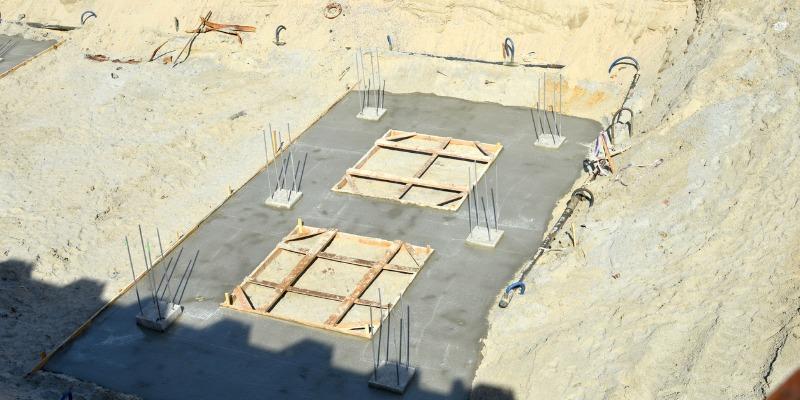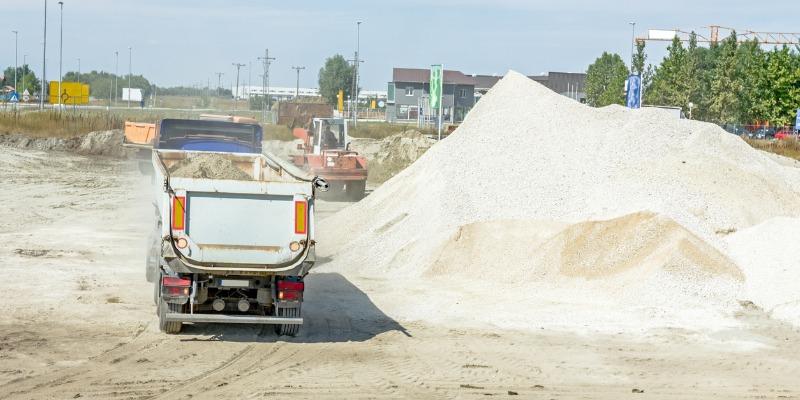Advertisement
Advertisement
Frac Sand Scarcity: Meeting the Growing Demand
Feb 17, 2025 By Kelly Walker
The ever-growing demand for frac sand and concrete has cast a spotlight on the challenges surrounding the scarcity in these essential resources. Frac sand, a critical component in hydraulic fracturing for oil and gas extraction, and concrete, the backbone of the global construction industry, are both facing increasing pressure due to a combination of factors. As industries and populations expand, predictions for future demand in these sectors are causing stakeholders to assess the sustainability and availability of these resources. In this article, we delve into the predictions for future demand, the technological advancements shaping scarcity, and the significant role sustainability and environmental concerns will play in addressing these challenges.
Frac Sand: Demand and Scarcity
Frac sand, characterized by its high-purity, well-rounded, and hard quartz grains, is essential to the fracking industry as it serves as a proppant, maintaining fractures created during hydraulic fracturing and facilitating the extraction of oil and gas from tight shale formations. The industry's robust reliance on frac sand is driven by the surge in hydraulic fracturing activities for energy resource extraction, technological advancements requiring larger quantities of quality sand, and its role in maintaining well productivity. However, the environmental repercussions of frac sand mining, including habitat disruption, water resource depletion, and air pollution, pose concerns. Furthermore, scarcity of suitable frac sand can inflate costs and necessitate longer transportation distances, underscoring the need for sustainable mining practices to ensure a stable supply for a crucial industry within the energy sector.
Concrete: Demand and Scarcity
Concrete, a cornerstone of construction and infrastructure, owes its significance to its durability and versatility. The high demand for concrete is driven by urbanization, population growth, economic development, and modern architectural trends. However, the concrete industry grapples with environmental concerns, including energy-intensive cement production and ecosystem disruption during aggregate extraction. Scarcity of concrete can lead to project delays and increased costs while intensifying environmental impacts as alternative sources are sought. To address these challenges, there's a pressing need to explore sustainable production methods, recycling practices, and greener technologies, ensuring a balance between meeting the demand for construction and minimizing the industry's ecological footprint.
Connection between Frac Sand and Concrete

Use of frac sand in concrete production
Frac sand and concrete are interconnected within the construction industry. While their primary functions differ, frac sand finds application in concrete production, particularly in high-performance and ultra-high-performance concrete where its well-graded, high-purity characteristics enhance strength and durability. This dual-purpose utilization underscores frac sand's role in improving the quality and performance of construction materials.
The interdependence of frac sand and concrete industries
The frac sand and concrete industries exhibit a significant degree of interdependence within the broader construction sector. While frac sand primarily serves the hydraulic fracturing needs of the oil and gas industry, its secondary role in high-performance concrete production demonstrates how different construction-related sectors can rely on shared resources. This interdependence reflects the dynamic nature of resource allocation within the construction realm.
How scarcity in one industry affects the other
Scarcity in either the frac sand or concrete industry can have a cascading effect on the other. A shortage of high-quality frac sand, whether due to increased demand or environmental constraints, can disrupt the production of high-performance concrete, potentially leading to project delays and compromises in construction quality. Conversely, a scarcity of concrete materials may drive up demand for alternatives, possibly intensifying pressure on frac sand resources as industries seek viable substitutes. The relationship between these industries highlights the need for sustainable resource management and innovative solutions to mitigate potential shortages and maintain construction project integrity.
Solutions and Mitigations

Sustainable practices in frac sand mining, such as responsible extraction methods and land reclamation, can help mitigate environmental impacts while ensuring a steady supply of essential materials. Innovations in concrete production and alternative materials, like carbon-neutral cement and recycled aggregates, offer eco-friendly solutions to reduce the demand for traditional concrete components. Government regulations and policies that promote resource conservation and responsible mining practices can address scarcity issues. Additionally, recycling and reusing concrete not only reduces waste but also extends the lifespan of construction materials, contributing to a more sustainable and resource-efficient construction industry.
Case Studies
Frac sand scarcity is affecting regions like West Texas and Wisconsin, while concrete shortages are a concern in places like California and the United Kingdom. To tackle these challenges, companies are diversifying their sources of frac sand, investing in logistics, and adopting sustainable mining practices. In the construction sector, firms are exploring local production, stockpiling materials, and collaborating with authorities to ensure a steady concrete supply while also considering alternative building materials. These efforts represent a multifaceted approach to mitigate shortages and ensure the resilience of critical resources in the energy and construction industries.
Future Outlook
The future outlook for frac sand and concrete suggests that while demand for frac sand may stabilize in response to evolving energy trends, there will likely be sustained demand for concrete in the global construction industry, driven by urbanization and infrastructure development. Technological advancements, such as more efficient drilling methods in oil and gas exploration and innovative concrete production techniques, could alleviate scarcity concerns, albeit with environmental considerations. Sustainability and environmental concerns are anticipated to play a pivotal role in shaping the future, compelling industries to adopt eco-friendly practices, explore alternative materials, and invest in sustainable sourcing and production processes to ensure long-term availability and meet the demands of a rapidly changing world.
Conclusion
In the face of mounting demand for frac sand and concrete, it is clear that the challenges surrounding scarcity are not to be underestimated. As we look to the future, it becomes increasingly evident that a dynamic and innovative approach will be necessary to meet the demands of a rapidly evolving world. Technological advancements hold promise for mitigating scarcity concerns, but they also underscore the importance of balancing progress with environmental responsibility. The journey ahead will be defined by a commitment to sustainable practices and the collaborative efforts of industries, communities, and governments to ensure the long-term availability of these indispensable resources.
On this page
Frac Sand: Demand and Scarcity Concrete: Demand and Scarcity Connection between Frac Sand and Concrete Use of frac sand in concrete production The interdependence of frac sand and concrete industries How scarcity in one industry affects the other Solutions and Mitigations Case Studies Future Outlook Conclusion
Net Profit Margin: An Overview

Stock Exchange Owners: A Closer Look at the Players

How to Calculate the Return on Investment (ROI) of a Marketing Campaign

How Traders Use CCI (Commodity Channel Index) to Trade Stock Trends

The Future Value and Present Value of an Annuity

Cash on Hand versus Earnings: A Comparison

Deciphering Contingent Convertibles (CoCos): Unveiling the Secret Saviors of Banks

Deciphering Hedge Funds: Balancing Returns and Fees



